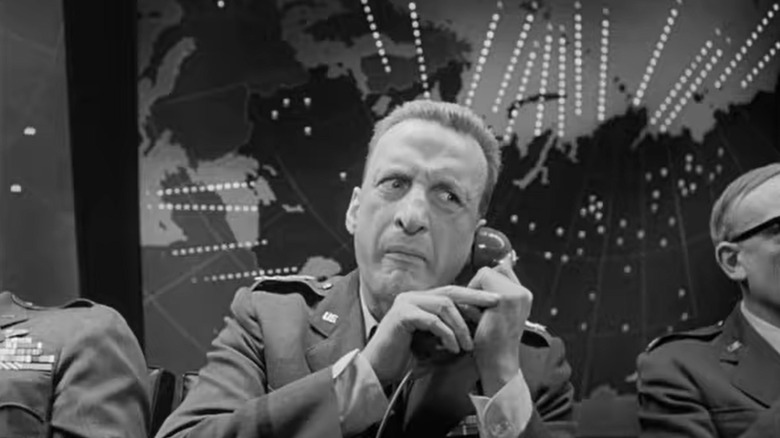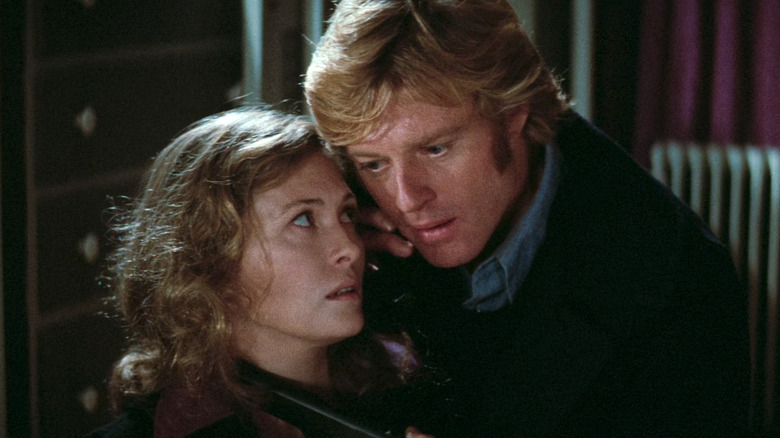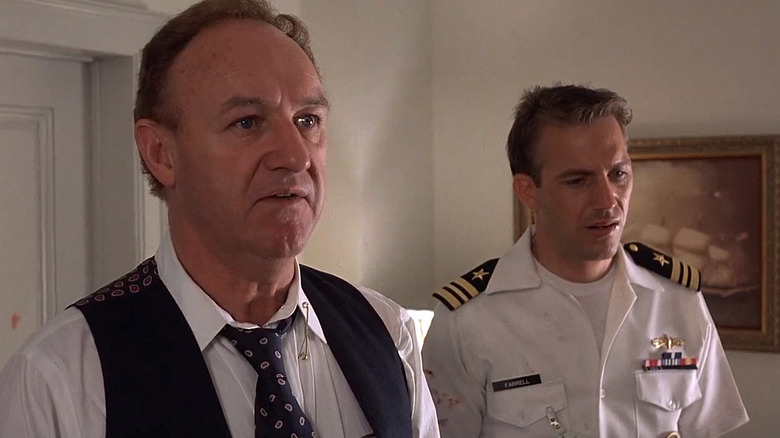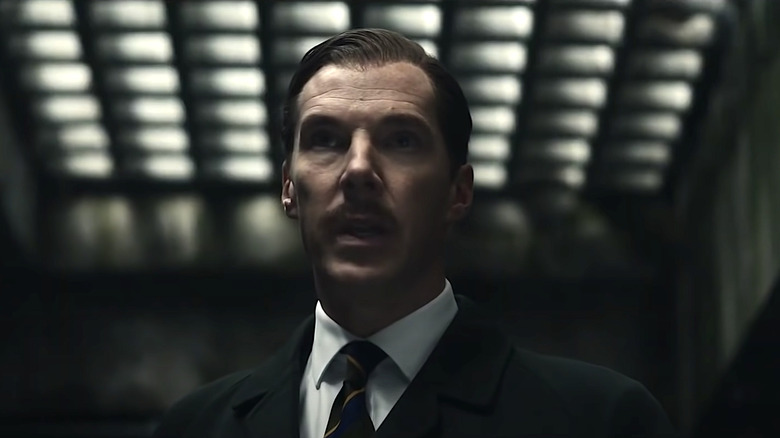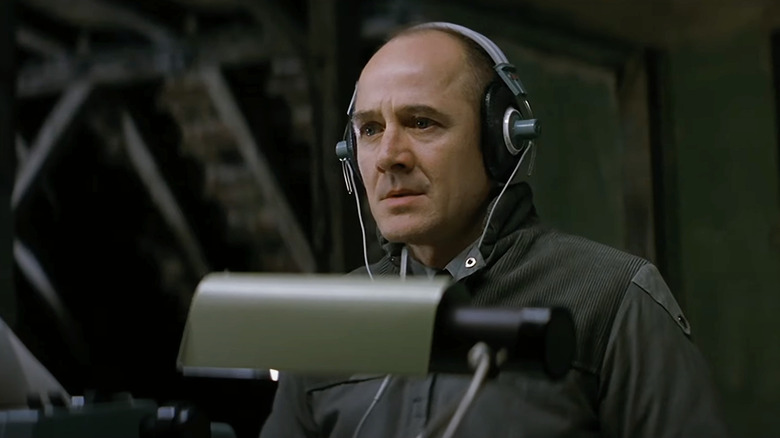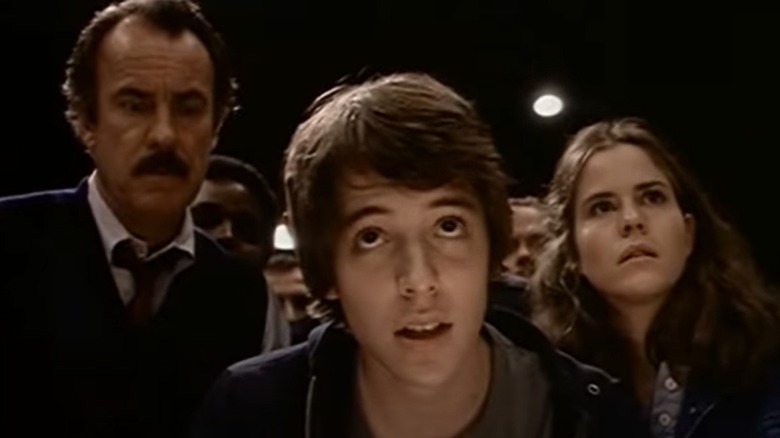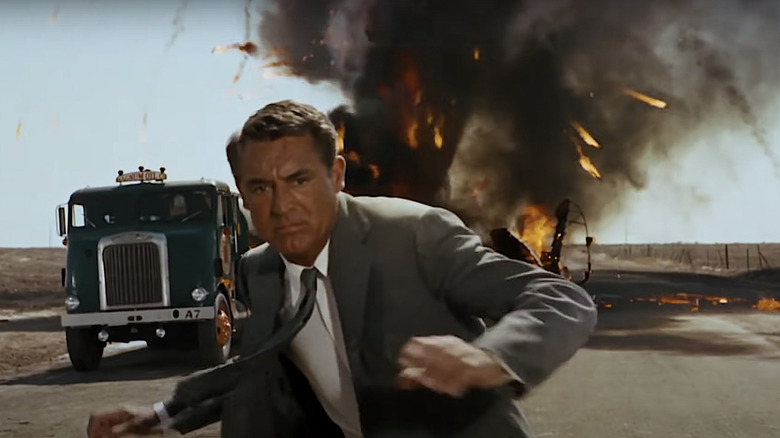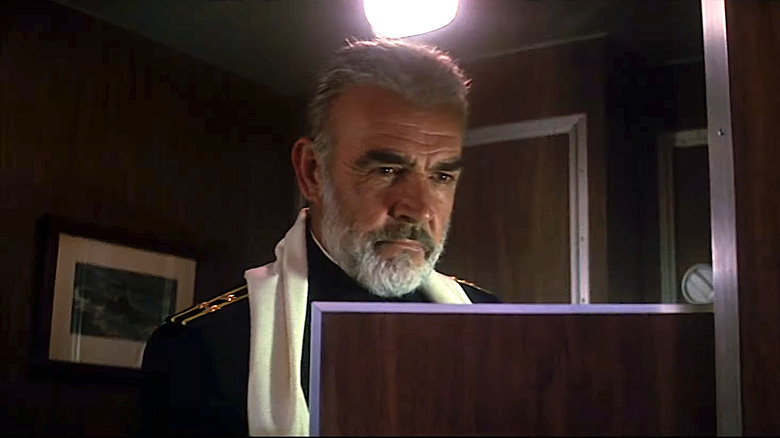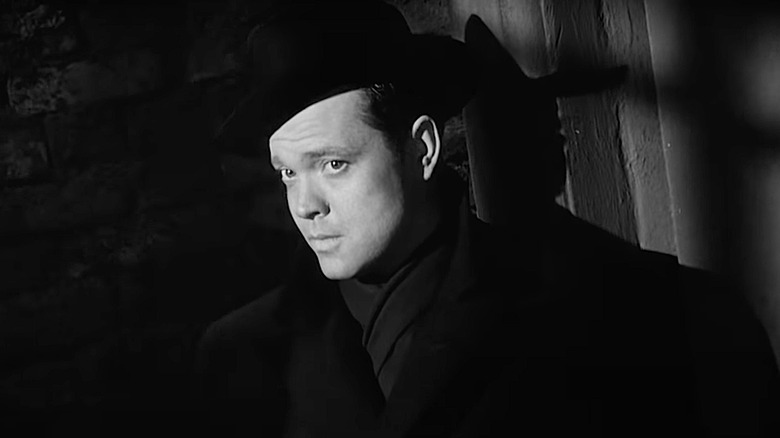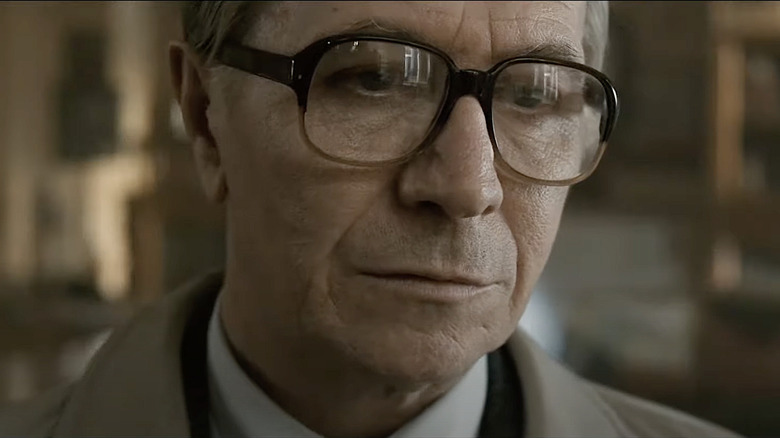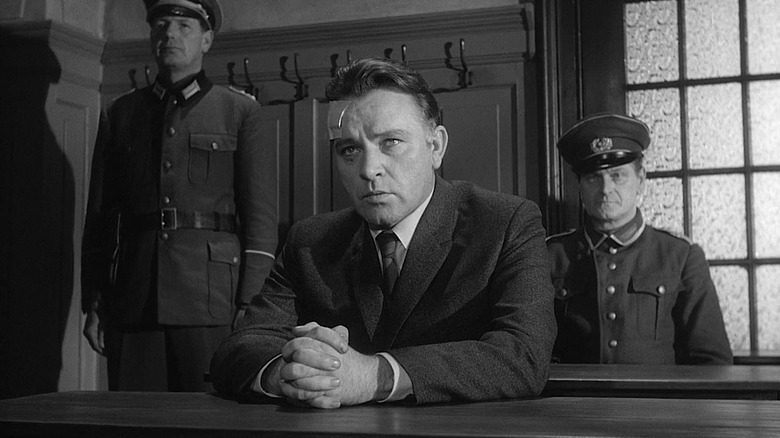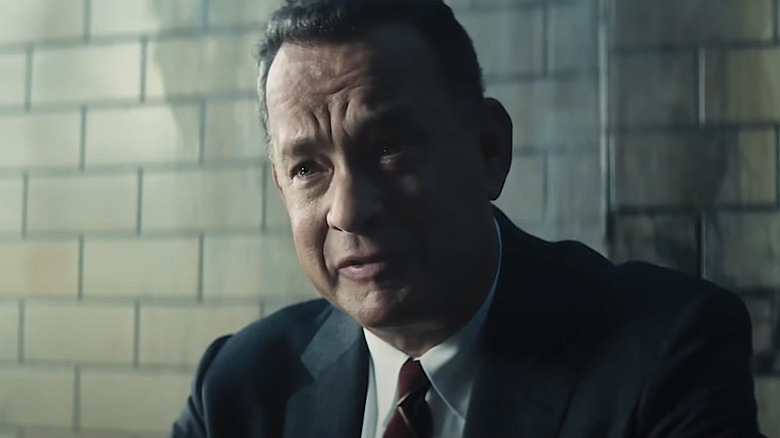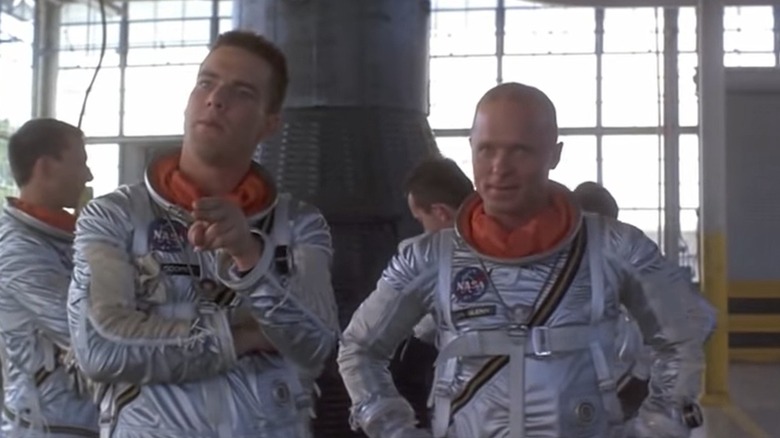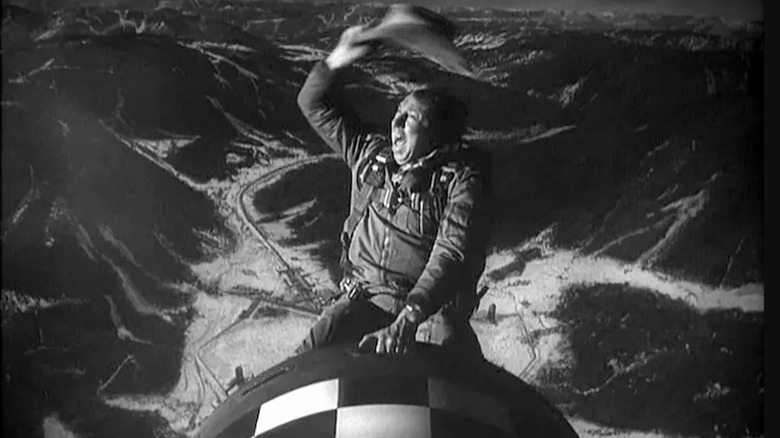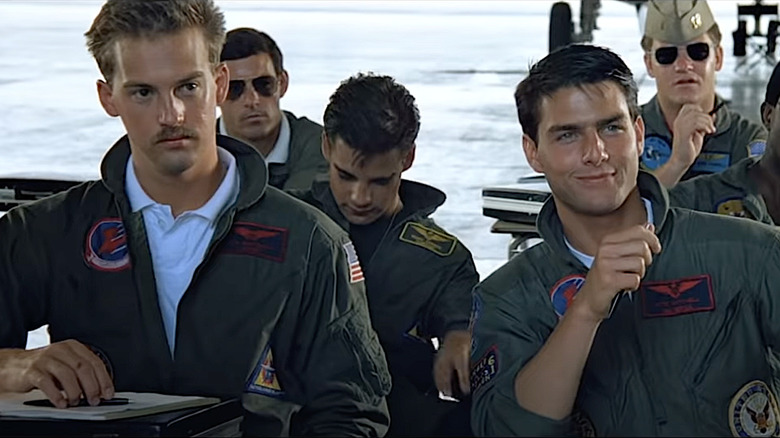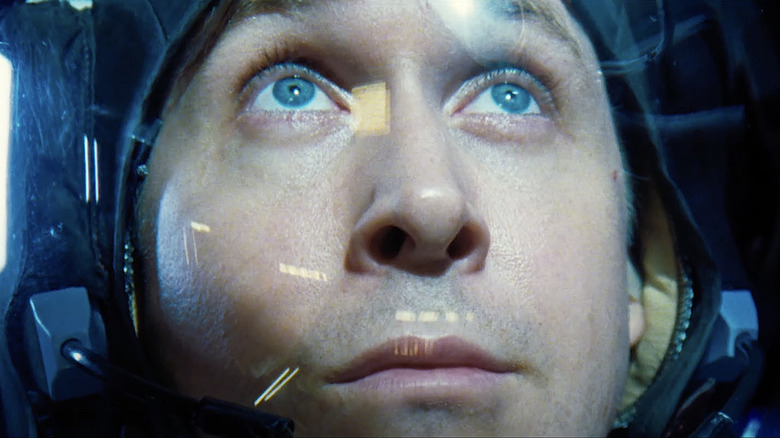The 15 Best Cold War Movies Ranked
The Cold War turned the whole world into a stage for detective thrillers in the form of spy movies. Then it turned the oceans, skies, cyberspace, and outer space into venues for some of the best action-adventure films ever made. Sure, the Soviet Union and the United States held the world hostage in an apocalyptic game of chicken, but we got some great movies to help us deal with all the anxiety of this interminable standoff.
Films like "Terminator 2" don't make this list but certainly could have. Skynet has no reason to exist outside of a Cold War context. Also absent here are Vietnam War films like "Apocalypse Now" and Korean War movies like "M*A*S*H." These deadly proxy clashes belong to rich film genres of their own. This list is dedicated (with one big exception) to films that depict more direct East vs. West contests from the end of World War II to the fall of the Soviet Union in 1991. Here are the 15 best Cold War movies, ranked.
15. Three Days of the Condor
The opening scene of 1975's "Three Days of The Condor" name-checks both Dick Tracy and Dashiell Hammett, the novelist behind Humphrey Bogart's classic "The Maltese Falcon." Spy movies and classic film noirs have a lot in common. They're both procedural mysteries with a central hero pulled into a labyrinthine conspiracy they must solve or die.
Robert Redford plays Joseph Turner, a bookish CIA analyst working in a Manhattan spook shop hidden in plain sight. He spends his days combing through foreign novels for spy plots that may contain clues about real espionage. One day, he returns from lunch to find everyone in his office dead, and he has to figure out why before it's too late.
Aside from the unfortunate disco score, this Sydney Pollack film still mostly works. It's also a Watergate-era picture, so the plot turns inward, and there's nary a Russian to be seen. It's a beautifully shot and well-acted man-on-the-run thriller. Redford and Faye Dunaway also have a nice romantic interlude. "Three Days of The Condor" is a naive take on Cold War intrigue anchored to grand conspiracy paranoia in place of a real reckoning with the conflict's dynamics. It's also a lot of fun.
14. No Way Out
"No Way Out" was made two years before the fall of the Berlin Wall, near the zenith of America's reign as a superpower. It hinges on interagency bickering in the era of boondoggle budgets. Gene Hackman plays Brice, the U.S. secretary of defense. He wants to scuttle a pork-barrel project for a giant nuclear submarine and hires Navy Lt. Cmdr. Farell (Kevin Costner) to gin up intel on certain government agencies to make that happen. Before that can go down, Farell begins a secret affair with Susan Atwell (Sean Young), who turns out to be Brice's mistress. Brice kills her in a fit of rage and taps Farell to head up a phony operation to pin it all on a Russian spy.
It sounds complicated, but it's just a love triangle with a "wrongly-accused-man" plot on top. Farell has to get the goods on Brice before the investigation links him to the dead woman. "No Way Out" is an engrossing popcorn pleaser complete with a ridiculous twist.
13. The Courier
"The Courier" is the best kind of Cold War spy film. Like "Bridge of Spies," it's a (mostly) true story about an ordinary citizen who gets embroiled in the conflict's information war.
Benedict Cumberbatch (who appears in two other fantastic films on this list) stars as Greville Wynne, a real middle-class British businessman recruited by MI6 in 1960. He spent two years smuggling secrets out of Moscow, including information that assisted the West during the Cuban Missile Crisis. That all ended in 1962 when he was captured, imprisoned, and tortured.
The cinematic version of Wynne makes a good spy because he has a long record of what his Eastern interlocutors view as craven capitalism. He easily portrays a man of supreme self-interest, as he likens managing field assets to making clients happy. In real life, Wynne allegedly had another crucial spy skill. He wrote two books about his experience, of which Cold War researcher and author Nigel West said, "Bless him, for all his wonderful work, [Wynne] was a menace and a fabricator ... He just couldn't tell the truth. It was pathological with him." Director Dominic Cooke's 2020 film, however, was patched together through multiple sources so it is likely more accurate. The businessman turned spy may have been a fabulist, but this well-made account credits him where much credit is due.
12. The Lives of Others
"The Lives of Others" from 2005 is about a cold-blooded Cold War spy whose insidious work unexpectedly takes a heartwarming turn.
Gerd Wiesler (Ulrich Mühe) is a dedicated Stasi agent in the early 1980s. The Stasi was the East German secret police and is widely acknowledged to be among the most effective and repressive intelligence organizations ever created. Wiesler is eavesdropping on a well-known communist playwright and his lover, who are suspected of some minor disloyalty. As he listens to the intimacy of the couple's life, his sympathies go from party to people, and he begins intervening to protect the couple.
Wiesler is a mere cog who spends his days attached to the state machine via a smart-looking set of studio headphones. His vicarious adventure, however, is just a hopeful fantasy. Some have argued it actually couldn't be true. "To understand why a Wiesler could not have existed is to understand the 'total' nature of totalitarianism," writes author and Stasi researcher Anna Funder for The Guardian. The Stasi-protected state was just too competent and meticulous to allow one agent this much freedom of action she argues. Nonetheless, "The Lives of Others" won the Oscar for best foreign-language film in 2006. It has the kind of restrained dignity the Academy likes. It's a moving (if fanciful) human drama, best suited for those like Wiesler with the patience to sit quietly and observe.
11. WarGames
Techno-thrillers don't often age well, but if you saw "WarGames," the story of a teenager who nearly starts World War III from his bedroom, in 1983, it was riveting. And it still works.
Three years before Matthew Broderick became the iconic Ferris Bueller, he played a similar character in David Lightman, a bright teen with a mischievous mind and a serious aptitude for early home computers. During a search for video games, he haplessly hacks and triggers a military supercomputer the Pentagon has entrusted to fight a global thermonuclear war. As the countdown to Armageddon commences, Lightman and his girlfriend, Jennifer (Ally Sheedy), must somehow convince the adults to let him stop it.
In terms of technology, "WarGames" was so ahead of its time that major studios initially didn't get it. IBM's "Deep Blue" would eventually outduel a chess world champion but not until 1997. Co-writer Lawrence Lasker was initially inspired by Stephen Hawking. "WarGames" was going to be about physics, but when PCs and early hackers captured the scribe's imagination, the focus changed. The film does have an older mentor figure based on Hawking, played by John Wood. Interestingly, that role was supposed to go to John Lennon, but the part was recast when the former Beatle was assassinated in 1980.
10. North By Northwest
In "North by Northwest," Cary Grant plays Roger Thornhill, a New York ad man who could easily slide right behind Don Draper's desk on "Mad Men." Roger has identity troubles, too, and they lead to a thrilling pursuit by a spy who frames him for murder. Along the way, he meets femme fatale Eve Kendall (Eva Marie Saint), and the two scamper across the country to clear his name.
Despite the romance, this is Hitchcock's least intimate film. "North by Northwest" has serious scale, nearly approximating a modern blockbuster. This is also the auteur's most beautiful film. It was shot on VistaVision, a high-resolution 35 mm widescreen film stock. The colors, scope, and innovative framing add up to a pop-art masterpiece as Grant's Thornhill sprints through one immaculately curated set-piece after another.
The Cold War plot is a pure Hitchcock Macguffin. It has to do with some smuggled microfilm, but that doesn't matter. Many consider this Hitchock's best film. It's definitely among his most entertaining. It's funny, suspenseful, and action-packed. And it doesn't get too bogged down in existential Cold War quandaries.
9. The Hunt for Red October
"The Hunt for Red October" is the Cold War submarine classic that almost wasn't. According to one producer, Paramount Pictures thought Tom Clancy's 1984 novel was too technical and too filled with jargon.
Also, by the time of the films' release in 1990, the Cold War was all but over. The Communist Party was no longer in control of Russia, so some industry watchers feared the film would flop. It didn't. The $30 million production cost is reasonable for the genre, and the $200 million global gross was a tidy return.
Sean Connery anchors this tense yet nostalgic underwater thriller but was a last-minute addition and had just one day of rehearsal. As the rogue Russian Navy captain, Marko Ramius, who steals an advanced Russian nuclear submarine, Connery is the film's real draw. Both the Americans and the Soviets want him dead, but it's up to Jack Ryan (Alec Baldwin) to avert World War III by convincing his CIA cronies that Ramius wants to defect, turn over this advanced technology, and live happily ever after in Montana. This is a hopeful thriller that coincided with one of the more optimistic moments in the history of this potentially apocalyptic superpower standoff.
8. The Third Man
Released in 1949, "The Third Man" is arguably the most beautiful black and white film ever made. Director Carol Reed worked such long days as he ran both production units that he developed an amphetamine addiction just to keep pace. Despite the personal cost to Reed, the result is one stunning celluloid vista of Vienna after another. For fans of symmetry and careful mise-en-scène, this is the boutique Cold War movie for you.
However, "The Third Man" is more than style and whimsy. It's also an intriguing whodunnit. Holly Martins (Joseph Cotten) plays a pulp Western novelist who arrives in Vienna to visit his old pal, Harry Lime (Orson Welles), only to discover he has mysteriously died. Martins finds an Austria ravaged by World War II with a seedy underbelly of black market intrigue. It's a portrait of lawlessness and corruption in the early phases of Cold War reorganization, and everyone in this classic film-noir detective tale is a suspect. It's a little dated of course, but the beauty of the filmmaking stands the test of time.
7. Tinker Tailor Soldier Spy
"Tinker Tailor Soldier Spy" is the rare spy movie that doesn't hold your hand through its complex plot. There is no explanatory text, no expository dialogue, and no supervillain who monologues the master plan. It's two-plus hours of spies discreetly doing what they do in soundproof rooms. Catch them if you can.
"Tinker, Tailor, Soldier, Spy," is based on the novel of the same name by John Le Carre. His central hero is master spy George Smiley, who often heads "the circus," England's foreign spy division fighting on the front lines of the Cold War. Gary Oldman plays Smiley in oversized glasses that magnify his alert eyes on his otherwise implacable face. This is a hero who listens much more than he talks, always careful to learn more than he reveals.
Smiley is tapped to smoke out a mole planted inside the circus. Everyone in this fantastic ensemble, including Benedict Cumberbatch and Colin Firth, is a suspect. Tom Hardy is phenomenal as a rogue field agent. It's all very confusing, and that's the point. No Cold War film better captures the hall of mirrors of mid-century spycraft.
6. The Spy Who Came in from the Cold
If you're anything like me and struggle with directions, dates, and even faces, mid-century spycraft is not the career for you. My last words just before I'm led to the Gulag would probably be something like, "What's my codename again?"
Alec Leamas (Richard Burton) in "The Spy Who Came in From the Cold" doesn't share these mnemonic shortcomings. He's the creation of novelist John Le Carre who also wrote "Tinker Tailor Soldier Spy." Leamas is an SIS spook working in Berlin at the height of the Cold War. He speaks fluent German, and his memory is photographic. He's just lost the stomach for the moral muck of it all, and yet, agrees to pose as a defector.
Spies in the complicated plots of Cold War thrillers live in an infinite regress of double and triple-agency. They play musical chairs with the truth, and the complex game mirrors the moral relativism of the work. Each side claims their sacrifices are for the greater good. But Burton's Leamas doesn't believe this. He only knows that evil is real, and he's had enough. Yet, when he turns to drink, you can only think his boozy behavior is the perfect cover for his role as an embittered defector. Even at the end of his rope, Leamas is a true Cold Warrior whose conscience is his only liability in the slow-motion tragedy of this conflict.
5. Bridge of Spies
"Bridge of Spies" is a true story. In 1957, Soviet spy "Rudolf Abel" was arrested and indicted, and a Brooklyn-based insurance lawyer named James B. Donovan was appointed to defend him. But when an American spy plane was shot down by the Russians, Donovan, an ordinary family man, was thrust into the middle of a tense Cold War prisoner exchange.
Steven Spielberg's 2015 film is based on Donovan's memoir, "Strangers on a Bridge." The public is initially furious at Donovan (Tom Hanks) for defending a foreign spy, as he doggedly takes the case to the Supreme Court. But Hanks plays Donovan with utter conviction. The Constitution is the one thing that makes us all Americans, he explains. This one document is the moral high ground of the West, and stands in stark relief to the kangaroo courts and show trials of Stalin's U.S.S.R.
Cold War spy films are often cynical explorations of moral muck, but Hanks and Spielberg make patriotic war films that harken back to Hollywood's golden age. The script, written in part by Joel and Ethan Cohen, gives a full-throated explanation of the film's major themes about equality under the law. Then Spielberg, ever the sentimentalist, brings it all home with a finish sure to put a lump in your throat and a tear in your eye.
4. The Right Stuff
There's some fascinating research that suggests the same brain anomalies that make a killer like Ted Bundy can also be nurtured into behaviors like strapping onto an experimental rocket and blasting into space. "The Right Stuff" is NASA's death-defying origin story, and it all hinges on seven pilots who really aren't like the rest of us. Ed Harris stars as pioneering astronaut John Glenn. Glenn and a team of aviators volunteer to be poked and prodded during the space program's inception in 1958.
The film's lower orbit opening act is the most moving. It follows the thrill-seeking test pilots who first broke the speed of sound at an airbase in California. A quarter of these men were killed while their long-suffering wives could do nothing but watch. During an awful stretch in 1952, 7 pilots a month were lost in this duel with gravity.
"The Right Stuff" does have an unfortunate middle section in which Lyndon Johnson and Dwight Eisenhower hold a bumbling meeting about the Russians getting to space first. It's an ill-advised attempt to ape Stanley Kubrick's slapstick tone in "Dr. Strangelove," but fortunately this mission is quickly aborted. The final act lands clean after a spectacular series of launches. The first Americans in space were propelled by international competition but survived the rush to orbit because of their unique abilities. This epic film perfectly captures their bravado and their valor.
3. Dr. Strangelove or: How I Learned to Stop Worrying and Love the Bomb
Stanley Kubrick's "Dr. Strangelove or: How I Learned to Stop Worrying and Love the Bomb" captures the death-cult absurdity of nuclear war logic. Mutually Assured Destruction sounds like the deranged ramblings of a madman or supervillain, and to that end, Kubrick created Nazi scientist and Ph.D. of Cold War calculus, Dr. Strangelove.
The plot is as absurd as the world's predicament. A mad general named Jack D. Ripper launches a first strike after becoming convinced the Soviets are poisoning the American water supply. A scramble to save the world follows. The iconic Peter Sellers plays three pivotal roles: the American president, a British commander who can stop Ripper, and of course, the titular wheelchair-using Strangelove.
The film was called implausible by experts in 1964. Unfortunately, the scenario in which a rogue general ends the world was not only plausible, but some say remains possible to this day. Kubrick researched the project for years, reading 46 books on nuclear strategy. Tragically, not much has changed in the decades since Kubrick's seminal black comedy about humanity rigging its own planet to explode.
2. Top Gun
"Top Gun" is one of the most ecstatic pieces of pop art ever made and a masterpiece of American iconography. Scene after memorable scene feels cut out of some kind of cosmic Cold War script as a young Tom Cruise battles Russian bogeys and a teeth-clenching Val Kilmer for ultimate air superiority.
Director Tony Scott was somehow always wildly underrated as an auteur. Maybe it's the long shadow of big brother Ridley Scott or the fact he never strayed far from action thrillers, but credit for this eye-popping piece of propaganda has never been properly laid at his feet.
"Top Gun" was made in the patriotic image of golden era World War II films and inspired a serious recruitment boom. According to The Washington Post, the Pentagon only charged Paramount $1.8 million for use of all the F-14s and a real U.S. aircraft carrier. The film's budget was officially just $15 million, but in terms of production value, we're talking billions. "Top Gun" has lots of 1980s machismo and a hilarious number of scenes in which pilots stand around in towels post-shower bickering about who flew closer to "the edge." Yet, all that still adds up to the most incredible aviation movie of all time and the closest thing to a full-on clash between modern American and Soviet jet fighters the Cold War ever produced.
1. First Man
"First Man" is the most powerful film about the Cold War space race ever made, though it's mostly focused on the heroic yet humble man who effectively won this competition for the United States. Director Damien Chazelle, best known for 2016's "La La Land," takes his fondness for vintage scenery (and Ryan Gosling), and along with cinematographer Linus Sandgren, turns the expansive story of Neil Armstrong's moon landing into an intimate family drama.
Based on the meticulously researched 2005 book of the same name by historian James R. Hansen, Chazelle's film finds Armstrong (Gosling) working as a fearless test pilot at the legendary Edwards Air Force Base in California. He's heartbroken over the death of his young daughter due to cancer, but he's a born stoic and channels his grief into one brush with death after another, piloting a series of rickety experimental aircraft.
Everyone knows about Armstrong's giant leap, but given the man's honorable disinterest in self-promotion, his personal life and many truly incredible pre-NASA aviation exploits are less publicized. "First Man" will move you to tears for the sudden smallness you will feel in the shadow of the moon and the towering presence of the first human who conquered it.
